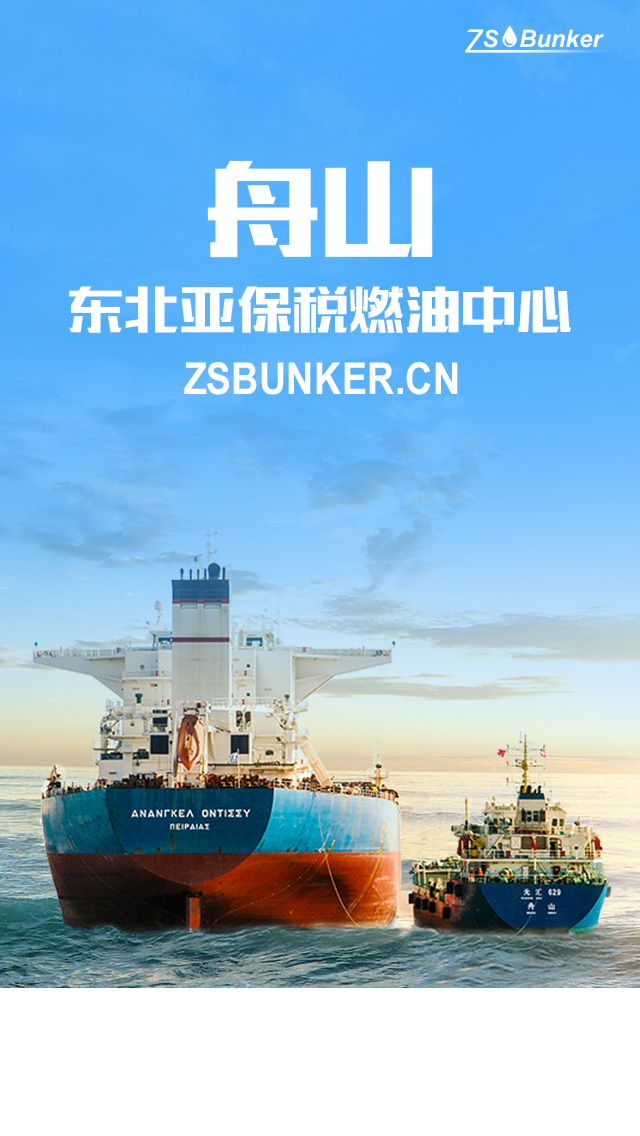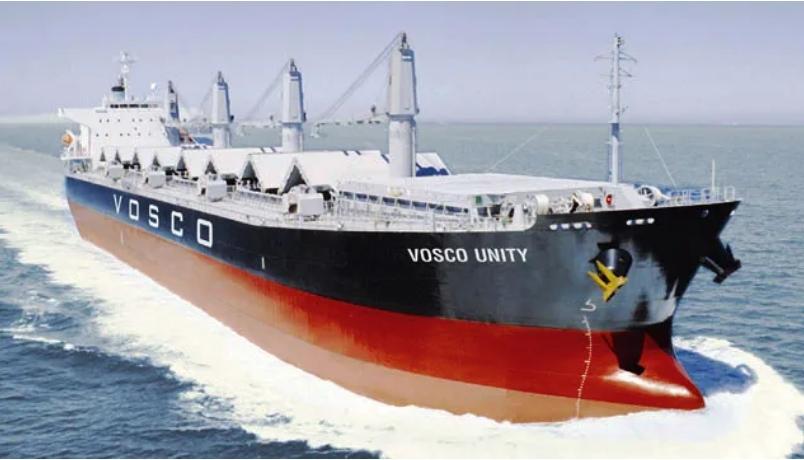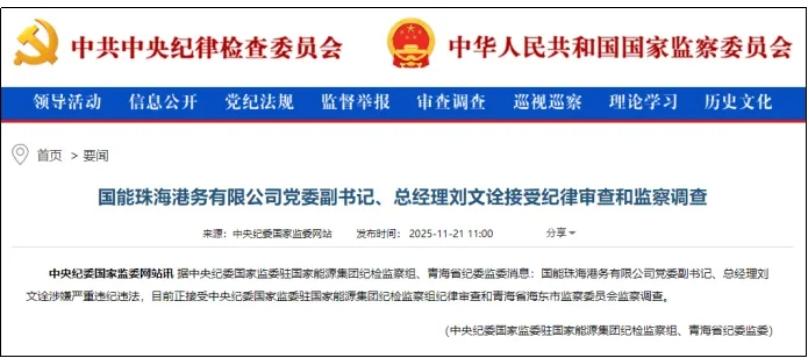
匆匆之间都来不及回头看,狗年已逝去;已然迎来了十二生肖的下一个队友,猪,俗称猪队友。酒醒之后,来一首东晋陶渊明的《杂诗》,为新的一年助兴。
人生无根蒂,飘如陌上尘。
分散逐风转,此已非常身。
落地为兄弟,何必骨肉亲!
得欢当作乐,斗酒聚比邻。
盛年不重来,一日难再晨。
及时当勉励,岁月不待人。
笔者很多年前,曾经在海青论坛里笔耕不辍,比现在还疯狂些。那时候必须得熬夜,因为只有那时候才会有别人都睡着,唯独自己醒的感觉;也只有那时候才有点顾城的感觉,黑夜给了我黑色的眼睛,我却用它来寻找光明。但这一切在现实面前,都显得不堪一击;当年论坛里才华横溢的诗人词人小说家,如今都消失在海大学子的记忆之中。
而笔者则改行,从事能糊口饭吃的航运业,写点海商法毕业的学生不愿意写的“科普”文。前段时间遇到一件让笔者大跌眼镜的事,在一篇优秀的硕士毕业论文中,随意挑选了一页,竟然发现超过20处有误或者需要修改的。按此比例,该篇论文中可以找出至少500处不完善的地方。这是非常夸张的,而导师竟然签字通过了;相信导师不至于水平这么烂,唯一的解释是导师在忙自己的正业,压根儿没用心去看学生的论文。提及这一点,是因为联想到最近被人批的北大光华学院博士后翟演员,刚从春晚的舞台下来就被人剥皮了。
放过任何一个水货都是对有真才实学,无数寒窗苦读学子的不公平。
但对于翟演员来说,不知道知网并非不可饶恕,没有哪条法律规定,写论文必须得知道知网。对于真正想研究的人来说,知网真的不是唯一;就像武功一样,人外有人天外有天,比知网更牛的还有很多。其实这也是另一个比较尖锐的话题,不是论文中引用了无数知网前辈说的话就变成了牛叉的论文,这种论文只是别人的传话筒。而且,很可能一传十十传百,加上每个人的理解能力,出发角度不同,再加点个人发挥,到最后很可能面目全非。
很多人拿杨老的书来说,1sb,London这类的措辞的合同是泊位租约;有这种误会,笔者认为一定是没有完全明白杨老所说的。想真正明白杨老在《装卸时间与滞期费》一书中说什么,那么最好是去看英文原版的《Laytime and Demurrage》;而这一最新版的,魏长庚船长等人已经翻译出来。当然还想研究透一些,还必须得去看该书中所提及的无数判例。
近期有人咨询,船舶在抵达长江口后,因为大雾封港封航,而泊位上并没有船,那么这些因大雾封港封航的时间到底能不能算laytime;等泊的时间到底应该由谁来承担。如之前文章所说,判定这些时间损失的责任归属,得看当事人双方之间的具体的合同相互条款之间的真实及整体解释。
接下来就先从该延误争议说起,到底谁该承担大雾封港封航的时间损失。
出租人以Gencon94格式带有租船确认书(Fixture Note)与承租人签订一份从越南的A港装水泥熟料到国内的江阴港卸的程租合同。出租人派D轮执行该航次。D轮装载了30,000吨货后于2018年11月20日0820抵达长江口锚地并抛锚,但由于大雾导致封港封航,改了最终11月24日的0850才起锚,于2100靠妥江阴的XX泊位。25日的1725按港口安排,从XX泊位移到XXX泊位,并于1820靠妥。D轮最终于11月30日的0630卸完货。
在江阴港的事实记录(SOF)如下:(备注:SOF删除,涉及的港口名及时间,泊位均作了适当修改。)
争议的主要焦点问题是,从11月20日0820抵达长江口后,到靠泊之前因为大雾大风等原因封港封航所导致的时间损失,到底算不算laytime,到底应该由谁来承担。
合同相关的主要条款如下:
2.Loading port: 1 sap A, Vietnam
3.Discharge port: 1 sbp Jiangyin, China
4.Loading/Discharging rate: 6000mt PWWD SHINC/10,000mt PWWD, SHINC
11.NOR to be tendered upon vessel’s arrival at load & discharge portsATDNSHINC WWWW. At discharge port the NOR should be tendered at Changjiangkou at any time day ornight, WWWW.
12.NOR to be tendered with email/fax ATDNSHINC, WWWW. Laytime commenced after 12hours turn time, unless loading/discharging commence sooner, In which case theactual time to count. Laytime cease to count on loading/discharging completed.
15.Otherwise as per GENCON C/P 1994.
16.Arbitration in Hong Kong and English law to apply.
17.At loadport time spend for initial and final draft survey, at discharge port first shiftingfrom anchorage area to berth, shall not to count as laytime.
当事人无法决定延误时间的归属,于是请教了BIMCO;BIMCO给予了答复,如下:
Referring toyour message please note that the answer might depend on the contractualdestination agreed in the governing contract. Since this is unknown to usplease note that the following comments are based on “one safe berth Jiangyin”.
Having said above please note that the general position is that the WWWW is only atthe owners’ disposal in theevent the ship is unable to proceed into berth because of congestion. From yourmessage it follows that parties have agreed that NOR to be tendered atChangjiangkou (CJK) WWWW which in our eyes confirm that the owners will only beable to tender a NOR at CJK in case the contractual destination is occupied. Upon the assumption that theparties have agreed a“berth” charter (one safe berth Jiangyin) the master canonly tender a valid notice only when the ship is at the berth.
From your caseoutline it follows that clause 11 and 12 does provide the master with thepossibility of tendering a valid NOR from the waiting place in case ofcongestion. Consequently, the C/P could possibly be referred to as a qualified“berth” charter and ifthe ship was unable to proceed into berth because of congestion a valid noticecould be given once the ship came to rest at the waiting place. If however theberth is not congested the vessel cannot tender a valid NOR at CJK anchorage.
If the owners’ view isadopted, it means that the WWWW will be extended to apply also if it is solelybad weather that prevents the ship from proceeding to the free berth and onbalance we have to say that we do not think that the owners are able tosucceed. Admittedly, the provision is not as clear as one would wish, but we donot think that it is sufficiently clear so as to cater for the view that it isirrelevant precisely why the ship cannot proceed and, as indicated above, theclause probably has to be read as a whole meaning that if the ship is unable toproceed because of congestion, then owners may rely on the WWWW. Since the berth was in factavailable and the ship thus in effect was still in the “voyage stage” the effects of thebad weather would be precisely as it would be in case of bad weather appearingin other parts of the voyage; the ensuing delay would fall within the owners’ sphere of risk.
This being so we must submit that so long as the vessel was not arrived at the contractualdestination laytime will as a consequence not be relevant before the vesselhave arrived at the berth.
Whenconsidering payment of freight we have noted that the freight was paid beforethe discharging commenced and we do not therefore think that the owners will beentitled to a detention claim because the charterers did not detain the vessel.
We are sorry weare unable to provide more encouraging comments.
之后,BIMCO就此问题继续给当事人答复如下:
If the parties specify in the contract that the contractual destination for the purpose oftendering a NOR is CJK then the vessel can tender at CJK even in a situationwhere the berth is free. Your understanding is thus correct and the chartererswould thus be liable for the waiting time after the vessel have tendered anotherwise valid NOR. The answer is the same even in a situation where the berthis occupied because the vessel have reached the contractual destination (forthe purpose of tendering a NOR) and laytime will thus commence to count at CJKonce the vessel have tendered a valid NOR.
When considering the third question please note that the answer will depend on theterms of the governing contract and the law governing the contract. UnderEnglish law the general position is that a valid NOR will trigger the noticetime upon the expiry of which, laytime will commence to count. Whenlaytime has commenced to count, the “loss of time” element shifts from theowners to the charterers, and laytime counts unabated save for the exceptionsexpressly agreed or in the event there is fault on the part of the owners orthose for whom they are responsible. As “bad weather” cannot be said to be a“fault” on the part of the owners, the charter party must specifically set outthat such time is not to count as laytime (or time on demurrage as the case maybe) if the time is to be suspended. If for example the parties have agreed thatthe days allowed for loading/discharge are agreed to be “Weather working days”the charterers may suspend laytime during the periods where noloading/discharging could take place due to bad weather had the vessel been atthe berth. In other words the charterers can rely on that exception to theextent they would be able to demonstrate that weather conditions would haveprevented cargo work had the vessel been at the berth.
之后BIMCO对于泊位租约,港口租约进行了简单的归类,答复如下:
In your case where you haveagreed a berth charter (1sb Yantai) it is thus important to include the four“w’s” because it will in essence make sure that the vessel can tender a NOReven though the contractual destination (the berth) is occupied. Whenconsidering whether the status of the C/P is that of a “port” or a “berth” C/Punder English law the general principles are :
- If the port isfirst mentioned, for example, “Casablanca, one safe berth”, it is a “port”charter because in so far as the port is mentioned first, the contractualdestination is the port.
- If the berthis first mentioned, for example, “1 safe berth Laayoune”, it is a “berth”charter because is so far as the berth is mentioned first, the contractualdestination is the berth.
- There is athird alternative, which is if the particular berth or terminal is expresslymentioned, for example, “Casablanca, berth B12, Euroarab Terminal”. Since theberth is specifically mentioned it will constitute a “berth” charter.
BIMCO一开始认为,D轮的租船合同中约定卸港为“1sbp Jiangyin, China”,该租约为泊位租约。其实这种类型的,并不足以让该租约成为泊位租约,只是从表面上看起来像是泊位租约;如果要变为真正意义上的泊位租约,那么还得有额外的合同条款。
关于泊位租约还是港口租约,可以参The “Kyzikos” [1989] 1 Lloyd’s Rep.1 (H.L.)案。在该贵族院典型判例中,Brandon ofOakbrook勋爵在第4页判决书中对于这两种租约格式的不同特征进行了分析和归纳。
一、港口租约“Port Charters”:
所先,租船的合同目的地是一个指定的港口;
其次,船舶要被认可已到达港口从而可以递交卸货准备就绪通知书(NOR),其必须满足两个条件。第一个条件是,如果船舶不能立即前往泊位,它应该已经到达了港内一个船舶通常停留的地方等泊。第二个条件是,船舶可立即、有效地供租家差遣。(关于这方面的可以参Reid勋爵的Reid Test及Diplock勋爵把程租合同分为4个不重复没有间隙的连续阶段的解释。)
二、泊位租约“Berth Charters”:
所先,租船的合同目的地是租约指定港口中的一个指定泊位;
其次,船舶已到达港口,从而可以递交卸货准备就绪通知书(NOR),必须(除非租约另有规定)已经到达了该泊位并准备就绪可以开始卸货。
First, the contractual destination of the chartered ship is anamed port.
Secondly, the ship, in order to qualify as having arrived at theport, and therefore entitled to give notice of readiness to discharge, mustsatisfy two conditions.
Thefirst condition is that, if she cannot immediately proceed to a berth, she hasreached a position within the port where waiting ships usually lie. The secondcondition is that she is at the immediate and effective disposition of thecharterers.
Bycontrast, the characteristics of a berth charterparty are these.
First,the contractual destination of the chartered ship is a berth designated by thecharterers within a named port.
Secondly,the ship, in order to qualify as an arrived ship, and therefore entitled togive notice of readiness to discharge, must (unless the charterparty otherwiseprovides) have reached the berth and be ready to begin discharging.
从Brandon of Oakbrook勋爵的这个解释及Diplock勋爵在EL Oldendorff & Co GMBH Appellants vTradax Export SA Respondents (The “Johanna Oldendorff”)[1973] 2 Lloyd’s Rep.285(H.L.)贵族院判例中关于程租航次的划分,关于出租人和承租人之间的如何递交有效NOR的一般责任分摊可以归纳为如下:
Port charter – charterer has greater flexibility in delivery his goods for loadingwhen he has to nominate port or range of ports, but he also allows the vesselto tender Notice of Readiness at the earliest possible moment, i.e. arrival atusual waiting place, thus triggering laytime also at the earlier stage.
Berth charter – charterer should nominate certain berth with port andaccordingly much more limited in his options as to loading place, on the otherhand Notice of Readiness can be validly tendered only alongside and thereforelaytime starts to run at the latest possible moment.
即在港口租约下,通常允许船舶在抵达习惯性等泊锚地就可以递交NOR;而在泊位租约下,那么必须抵达泊位才能递交。如果租船合同中没有相反的规定,那么就算泊位被占的情况下,出租人或船长也没有权利在习惯性等泊锚地递交NOR。为了规避这一苛刻的要求,出租人于是要求加上WWWW或者类似GENCON94第6条的措辞。
现在回头来看GENCON94格式,合同第6条关于Laytime的规定,仅截取第109行到116行相关的条文,如下:
If the loading/discharging berth is not available onthe Vessel's arrival at or offthe portofloading/discharging, the Vesselshall be entitled to givenotice of readiness withinordinaryoffice hours on arrival there,whether in free pratiqueor not, whether customs clearedornot. Laytime or time ondemurrage shall thencount as if she were inberth and in all respectsreadyfor loading/ discharging providedthat the Master warrants thatshe is in fact readyin all respects. Time used inmoving from the placeof waiting to theloading/ dischargingberthshallnotcountaslaytime.
如当船舶抵达或驶离装货/卸货港口时,装货/卸货泊位不能进入,船舶抵达那里时应有权在正常的办公时间内递交准备就绪通知书,不论船舶是否免除检疫,也不论是否已办理结关手续,只要船长保证船舶实际上已在各方面做好了准备,装卸时间或滞期时间就应当如同船舶已进入泊位并在各方面做好了装货/卸货准备一样进行计算。但船舶从等泊地点移到装货/卸货泊位所用的时间不应记入装卸时间。
D轮的合同关于NOR递交的,出现了3次WWWW(此处应该没有歧义应被解释为whether in berth or not,whether in port or not, whether customs clearedor not.whether in free pratiqueor not)。虽然有点多余,但并没有什么歧义,当事人的意图很明显,就是在抵达装卸港之后,不管船舶在泊位与否,在港与否,清关与否,免除检疫与否都可以递交NOR。
需要注意的实如果合同没有别的条款规定,仅仅单纯按照GENCON94格式,那么如第6条的第109行规定,“If the loading/discharging berth is not available on the Vessel's arrival at oroffthe port of…”也就是说,仅仅在装卸泊位不可用,即通常理解的泊位被占,有船的情况下,才可以在习惯性等泊锚地递交NOR。反之,如果泊位空着,那么就不能在等泊锚地递交NOR,因为船舶还未抵达合同规定的目的地-泊位。这种规定一旦泊位空着只能在抵达泊位才能递交有效NOR的合同就是典型的泊位租约。当然,合同的当事人在租船合同中可以自由做出相反的规定,比如D轮的合同,明确约定卸港的NOR在抵达长江口就应该递交NOR。
涉及GENCON94格式的判例非常多,如在North River Freighters Ltd v President of India (The “Radnor”)[1955] 2 Lloyd’s Rep.668(C.A.)上诉法院案中,租约为Gencon格式,装货的目的地的描述为:…one safe berth Dairen…and there load afull and complete cargo…
Parker勋爵在第680页判决书中认为,如果租约描述为“proceed to Dairen and then load at one safeberth”,那么是港口租约,如果没有“as ordered by the charterer”的话。但是本案中,为onesafe berth Dairen,并不是港口名称,赋予了承租人指定泊位的权利,该合同为泊位租约。
No doubt wherethe charter is in the form 'That the vessel shall proceed to….' a named port'and there load at one safe berth,' the charter is a port charter. Thecontractual voyage is to the port, albeit that the owners must obey thecharterer's instructions as to the berth nominated by the latter. Here,however, the contractual voyage is not to the port of Dairen, and if necessaryI would have held that this is a berth charter.
Jenkins勋爵对于港口租约和泊位租约的区别,在第679页判决书中作了如下解释:
So far as it is necessary to go into the distinctionbetween "port" and "berth" charters, I understand it to bethat in the case of a port charter (that is to say, a charter which requiresthe vessel to proceed for loading to a named port, but not to some particularberth either specified in the charter or by the express terms of the charter tobe specified by the charterer) the charterer has an implied right to nominatethe particular berth to which the vessel is to go, but that lay days begin torun so soon as the vessel has arrived in the commercial area of the port, isready to load, and has given notice to the charterer in manner prescribed bythe charter of her readiness to load; whereas in the case of a berth charter(that is to say, a charter which requires the vessel to proceed for loading toa particular berth either specified in the charter or by the express terms ofthe charter to be specified by the charterer) lay days do not begin to rununtil the vessel has arrived at the particular berth, is ready to load, and hasgiven notice to the charterer in manner prescribed by the charter of herreadiness to load.
因此判断一个合同到底是习惯上被称为的泊位租约还是港口租约,最为关键的是看合同到底是不是允许船舶在习惯性等泊锚地递交NOR并起算laytime还是只能抵达泊位才能递交有效的NOR开始起算laytime,其余一切都是表面现象。比如在The “Merida”[2010] 1 Lloyd’sRep.274案中,合同规定的装卸港为One good and safe charterers' berth terminal4 stevedores Xingang to one good and safe berth Cadiz and one good and safeberth Bilbao,在该案中被判为泊位租约。但是如果当事人又加了类似的措辞“NOR should be tendered upon arrival anchorage of Xingangand laytime commence to count after 12 hours turning time.”那么解释起来将是,虽然是泊位租约,但是可以在锚地递交NOR并起算laytime。
在前文这些的基础之上,再来看D轮的延误到底该由谁来承担。
1、卸港描述为:1sbp Jiangyin, China ( one safe berth safe port Jiangyin, China )
江阴港有多个泊位可供D轮卸货,参SOF,至少存在两个泊位江海码头的405#及狼山码头的408#泊位;而合同中并没有其它条款描述承租人可指定泊位的权利。因此该条款只能解释为普通的一个安全泊位一个安全港口卸货,而无其它解释。承租人在两个泊位之间移泊,违反了合同一个泊位的规定,因此得承担相应的移泊费用及承担相应的移泊时间损失及油耗。
关于卸港这种描述的,也可以参The “Finix ”[1975] 2 Lloyd’s Rep 415一案。在该案中,Donaldson法官(当时是)在第422页判决书中强调①具体的泊位名称或者②明确的指定泊位的权利 则为泊位租约;如果仅仅是承租人指定泊位的的默示的权利,则是港口租约。同时对于One safe berth, London或London, One safe berth对应的是泊位租约还是港口租约表示存在不确定性;也就是说还得看租约的其它条款。
It is well settled that where the destination is a named berth or there is an express right to nominate a berth, the charter is a berth charter-party, i.e., the ship is not 'arrived' before she reaches the berth. It is also well settled that where the destination is an area of wider extent, but there is an implied right in the charterer to nominate the berth or other discharging spot, the ship is 'arrived' when she reaches the appropriate part of the wider area and not when she later reaches the discharging berth or spot.
But there is a realm of uncertainty where the charter-party provides that discharge shall take place at, for example, (a) 'One safe berth, London' or (b) 'London, one safe berth'. The test is undoubtedly whether on the true construction of the charter-party, the destination is London or the berth.
My own view is that in case (a) it is the berth and in case (b) it is London. This point arose in The Radnor and Lords Justices Singleton and Parker seem to have inclined to this view.
2、可以递交NOR的位置
参D轮合同第11条规定如下
11.NOR to be tendered upon vessel’s arrival at load & discharge ports ATDNSHINC WWWW. At discharge port the NOR should be tendered at Changjiangkou at any time day ornight, WWWW.
纵然并入的GENCON94租船合同第6条有相反规定,只有在泊位被占的情况下才可以在锚地递交NOR。但是众所周知,当合同条款之间有冲突时,手打的条款优先于机打条款,即合同第11条优先于GENCON94格式的第6条。因此,D轮的出租人有权利,也应该依照第11条规定在长江口递交NOR。因为第11条明确要求必须在长江口递交NOR,用了措辞“...should…”。
如The“Laura Prima”[1982] 1 Lloyd’s Rep.2(H.L.)贵族院案中,Roskill勋爵在第6页判决书中认为,至少对他来说是一个新颖的主张,即解释一个条款如合同第6条可以合法地取决于其中一方的身份。Roskill勋爵认为他将只补充说,这个案件似乎是在下面的法院进行的,因为合同第6条和第9条之间存在冲突需要调节。Roskill勋爵不认为任何这样的冲突,正如他所解释的那样,正确地解释这些条款决不是冲突,他认为这种解释与其他解释是互补的。
My Lords, I would only add that the case seems to haveproceeded in the Courts below upon the footing that there was a conflictbetween cl. 6 and 9 which required reconciliation. With respect, I am unable tosee any such conflict. Properly construed, in the manner which I havesuggested, these clauses are in no way in conflict. I would regard them uponthis construction as complementary one to the other.
因此D轮的第11条和GENCON94格式第6条之间也并不存在冲突,只是互相补充。
3、Laytime起算是否需要出租人接受该NOR
BIMCO的人认为还需要承租人接受该NOR,但并没有哪个先例规定laytime起算必须得承租人接受NOR。Laytime可开始起算的条件是依据合同条款,有一个有效的NOR去触发Laytime开始起算。
相反,D轮的合同第12条明确规定,Laytime在12个小时的turning time过后便开始起算,除非装卸货更早开始,而实际使用的时间将计算Laytime。
12.NOR to be tendered with email/fax ATDNSHINC, WWWW. Laytime commenced after 12hours turn time, unless loading/discharging commence sooner, In which case theactual time to count. Laytime cease to count on loading/discharging completed.
此外,合同第17条也规定了,在卸港从锚地到泊位的移泊时间不计算laytime。
17.At loadport time spend for initial and final draft survey, at discharge port first shiftingfrom anchorage area to berth, shall not to count as laytime.
可能会有人觉得这条款并没有什么异常,但是按伦敦仲裁判例解释,规定的类似的措辞,那么将被解释为港口租约,而非泊位租约。
4、合同有WWWW及约定移泊时间不计算Laytime的情况
D轮的合同有第11条,12条有WWWW;同时在第17条又规定了移泊时间不计算laytime。就算不考虑第11条,第12条中明确的措辞,NOR需在长江口递交及laytime在12个小时的turning time后便开始起算,那么参London Arbitration 1/09 772LMLN 3 案,D轮的合同也是港口租约,而非BIMCO所理解的泊位租约。
在该仲裁案中,也是以GENCON格式及附加条款,执行从1 SBP ZHENJIANG, CHINA / 1 SBP VITORIA,BRAZIL,装载30,875吨硫酸钠。在该案中,涉及众多争议,有船吊缺陷,合同是港口租约还是泊位租约,船舶搁浅,卸货延误造成的额外泊位费及安保费用,及卸货延误是否可归于不在承租人控制之下等争议。本文就港口租约和泊位租约的争议进行简单介绍说明。
合同的相关条款如下:
Clause 20(a):
“At first Loading Port, NOR should be tendered uponvessel’s arrival on road, even by cable/vhf/tlx, within local office hours(0800 hours Monday to 1700 hours Friday), Saturday, Sundays and Public Holidaysexcluded, provided vessel is in all respects ready to load the cargo for whichit has been nominated, whether in berth or not, whether in port or not, whethercustom cleared or not, whether in free pratique or not.”
Clause 20(c):
“Vessel shall be deemed to have arrived upon vessel beingbrought up at anchor at the inner, outer or usual anchorage…”
Clause 21(a):
“At Loading Port: Laytime shall commence to count at 1400hrs, if NOR validly tendered till 1200 hrs (included) or at 0800 hrs next day,if NOR validly tendered within office local hours after 1200 hrs, time actuallyused in discharging before commencement of Laytime shall count as Laytime.”
Clause 21(e), second bullet point: “At Loading andDischarging Ports:
Shifting from anchorage to berth (until the vessel is All Fast Alongside, and ready in all respects to load/ discharge) shall not count as Laytime.”
承租人声称合同装卸港的描述基本上和“One safe berth, London”一致,因此该租船合同为泊位租约。如果为港口租约,那么在合同中加入WIPON这一措辞,是多余不必要的。
仲裁员裁定认为,关于递交NOR的非常具体的条款,船舶被视为“到达”的地点,装卸时间的开始以及从停泊处到泊位处的移泊时间中断计算,都产生了一个特殊的制度,在计算装卸时间时必须支付这一制度。承租人他们把这个问题远远超出了简单的说法,“无论在泊位与否”,在本租船合同的背景下,这几乎是多余的。特别是第21(e)条,第二个要点明确指出,装卸时间可以从锚地开始起算(更具体地见第20(a)条)。因此,承租人提交的租船合同是泊位租约将被拒绝。
Those very specific clauses regarding the giving of NOR,the place at which the vessel was deemed “arrived”, the commencement oflaytime, and interruption of laytime shifting from anchorage to berth created aparticular regime to which regard had to be paid when calculating laytime. Theytook the matter far beyond the simple words, “whether in berth or not” which,in the context of the present charter, were virtually surplusage. Inparticular, clause 21(e), second bullet point, made it clear that laytime couldbegin at the anchorage (as defined more particularly in clause 20(a)).Accordingly the charterers’ submission that the charter was a berth charterwould be rejected.
该案可以参《Laytime and Demurrage》Chapter 3 -Commencement of laytime 3.33,法庭拒绝了承租人认为该租船合同实际上是一泊位租约的主张。
3.33 In London Arbitration 1/09, the tribunal rejectedthe charterers’ submission that the charter in question was a berth charter inrespect of the load port where it provided for the vessel to load at: 1 SBP Zhenjiang.
因为D轮的租船合同第16条明确规定在香港仲裁适用英国法;那么在英国法下,如之前文件说明过的,判例对租约本身并没有约束力,但是在有类似措辞的情况下,就得受先例约束。那么最后来看D轮的争议和London Arbitration 1/09这一仲裁案具体的对比。
a. 合同格式
均为GENCON 94格式加附带有补充条款的租船合同,一致。
b. 装货港描述
1 sap A, Vietnam / 1 sbp Jiangyin, China 与 1 sbp Zhenjiang, China / 1 sbp Vitoria,Braszil,一致。
c. NOR 递交条件
第11条及第12条,与第20(a)及20(c)高度类似。
d. Laytime起算及移泊时间扣除
第12条及第17条,
…Laytime commenced after 12 hours turn time…
…at discharge port first shifting from anchorage area to berth, shall not to countas laytime…
与第21(a)及21(e)高度类似。
…Laytime shall commence to count at 1400 hrs…
…Shifting from anchorage to berth (until the vessel is All Fast Alongside, and ready in all respects to load/ discharge) shall not count as Laytime…
鉴于D轮租船合同第11还明确规定,At discharge port the NOR should be tendered at Changjiangkou at anytime day or night, WWWW. 基于此,因此笔者坚定认为D轮的租船合同为港口租约,该轮船长在11月20日0820抵达长江口递交的NOR有效,可以开始起算laytime。当然,除非承租人能举证在递交NOR的时候,船舶在事实上还准备就绪,那么可能会导致该NOR递交过早而无法开始起算laytime,当然这是另外一个话题。
总结:
如果与D轮租约相反的话,比如在租船合同关于NOR递交的条款约定如下:
Noticeof Readiness (NOR) at each load port shall be tendered in writing by facsimile,email or courier, to Charterer and/ or Charterer‘s nominated agent (if any)after the Vessel has arrived, having made fast at berth or anchored, and is in all respectsready and in free pratique (relevant contact details to be provided onfixture). If the loading berth or anchorage is unavailable when the Vessel reaches the load portdue to the berth or anchorage being occupied by another vessel, the Vessel maytender its NOR from the normal recognised waiting place designated by the portAuthority, even if outside the normal port limits and whether or not the Vesselhas been cleared by customs and/or quarantine authorities.
那么不管装卸港位置如何描述,1sb,London还是London,1sb,都将被视为理论上的泊位租约,因为只有当泊位被占的情况下,才有权利在习惯性等泊锚地递交NOR;否则,船舶必须抵达泊位才能递交NOR。普通的延误比如大雾大风或不夜航等等不会改变租约的性质,因此对应地这些延误就得出租人自行承担。
当然,如果承租人试图免责的话,如之前文章说过,可以依赖合同第4条,Loading/Discharging rate:8000mt PWWD SHINC/12,000mt PWWD,SHINC。如果在延误期间,天气不属于weather working day的话,那么将可能有权利扣除不算laytime。
而关于“Weather working day ”的解释,Pearson法官在CompaniaNaviera Azuero SA v British Oil & Cake Mills Ltd and others [1957] 1 Lloyd’s Rep 312案中,在第329页判决书中说到:在我看来,“天气适宜工作日”的正确定义是天气允许完成相关作业的日子,无论是否有人利用该许可;换句话说,就天气而言,这是一个工作日。在我看来,反向命题也必须在同一基础上。一天不是天气适宜工作日,只要当天的天气不允许进行相关作业,它就不是天气适宜工作日;而询问是否有人打算或计划或准备在当天进行任何相关作业并不重要。一天的全部或部分或根本不是天气适宜工作日的状态,仅由其自身的天气决定,而不是由任何人的行为,意图和计划等外来因素决定。
In my view, a correct definition of a “weather working day” is a day on which theweather permits the relevant work to be done, whether or not any person availshimself of that permission; in other words, so far as the weather is concerned,it is a working day.
In my view, also, the converse proposition must be on the same basis. A day is not a weather workingday, it fails to be a weather working day, in so far as the weather on that daydoes not permit the relevant work to be done, and it is not material to inquirewhether any person has intended or planned or prepared to do any relevant work on that day. The status of a day as being a weather working day, wholly orin part or not at all, is determined solely by its own weather, and not byextraneous factors, such as the actions, intentions and plans of any person.
Devlin勋爵在贵族院判例Reardon Smith Line Ltd v Ministry of Agriculture, Fisheries andFood [1963] 1 Lloyd’s Rep 12案中,也提到并在第41页判决书中说,众所周知,一天是否是天气适宜工作日取决于当天的天气特征而不是工作是否实际受到干扰。Pearson法官在Compania Naviera Azuero S.A. v. BritishOil&Cake Mills,Ltd., and Others [1957] 1 Lloyd's Rep.312案中就该观点的权威进行了审查,没有一方去挑战他判决的正确性。
It is well established that whether a day is a weather working day or not depends on the character of theday and not on whether work was actually interfered with. The authorities onthis point have recently been reviewed by Mr. Justice Pearson in Compania Naviera Azuero S.A. v. British Oil& Cake Mills, Ltd., and Others, [1957] 2 Q.B. 293; [1957] 1 Lloyd'sRep. 312, and neither side challenged the correctness of his decision.
参之前相关文章,可知:大雾及封港封航并不会影响weather working day的界定问题。对应D轮的货物,水泥熟料,很显然除非大雾异常严重,视线严重受到影响从而无法从事卸货作业,那么普通的大雾导致封港,并不会导致这种大雾天气不属于weather working day。基于此,承租人也无法依赖第4条来寻求免责,从而等泊期间所有时间都得正常计算laytime。
当然,有些承租人会以为港口当局的强制封港封航,比如大雾或者有沉船导致的,这些港口当局的强制性行为可归于不可抗力,因此可从laytime计算中扣除不算。其实不然,除非合同有相反规定,不然仅仅凭类似“Laytime not to count if Force Majeure occurred”简单的措辞不足以令laytime可终止不算。在英国法下,法律会对想引援不可抗力条款来免除责任的采取严格的解释。不可抗力有三大要素,一是外部的,二是不可预见的,三是不可抗拒的。如果想成功引援不可抗力来免除责任,那么想引援的一方必须负有举证责任。虽然这些港口当局的强制行为是外部的,但不是不可预见的,在多雾季节港口封港封航是可预见的;此外发生沉船需要打捞而封港封航也不是偶然异常事件,此等风险在签约当时就应该被预见。再者,还得去证明不可抗拒,这种不可抗拒性,不是简单地不作为,而是采取了一切符合常识的举措之后的仍然无法作为。
因此,D轮承租人简单地想引援不可抗力来免除责任,基本上不大可能。更何况,租船合同中并没有相关的不可抗力条款或额外的例外条款规定。
本文的情况也适合冬季港口受冷空气影响的情况,比如营口或大连港或京唐港或长江内的港口等等,这些港口一旦受到冷空气影响(大风)往往会导致封港,而此时,大风通常不会影响装卸货,所以还是得正常计算laytime。而如果泊位上的船完货了离不了港,承租人往往会争辩封港给他们造成了时间损失,所以得扣除计算laytime。但实际上,大风天气(如果能够正常卸货)并非不是weather working day,所以仍得正常计算;除非是租船合同中明确列明了因大风导致封港封航造成了时间损失不算laytime。
海运圈聚焦专栏作者 Alex (微信公众号 航运佬)

 2019-02-18
2019-02-18 2088
2088 












